On the effect of cyanobacteria on the speech functions of the president
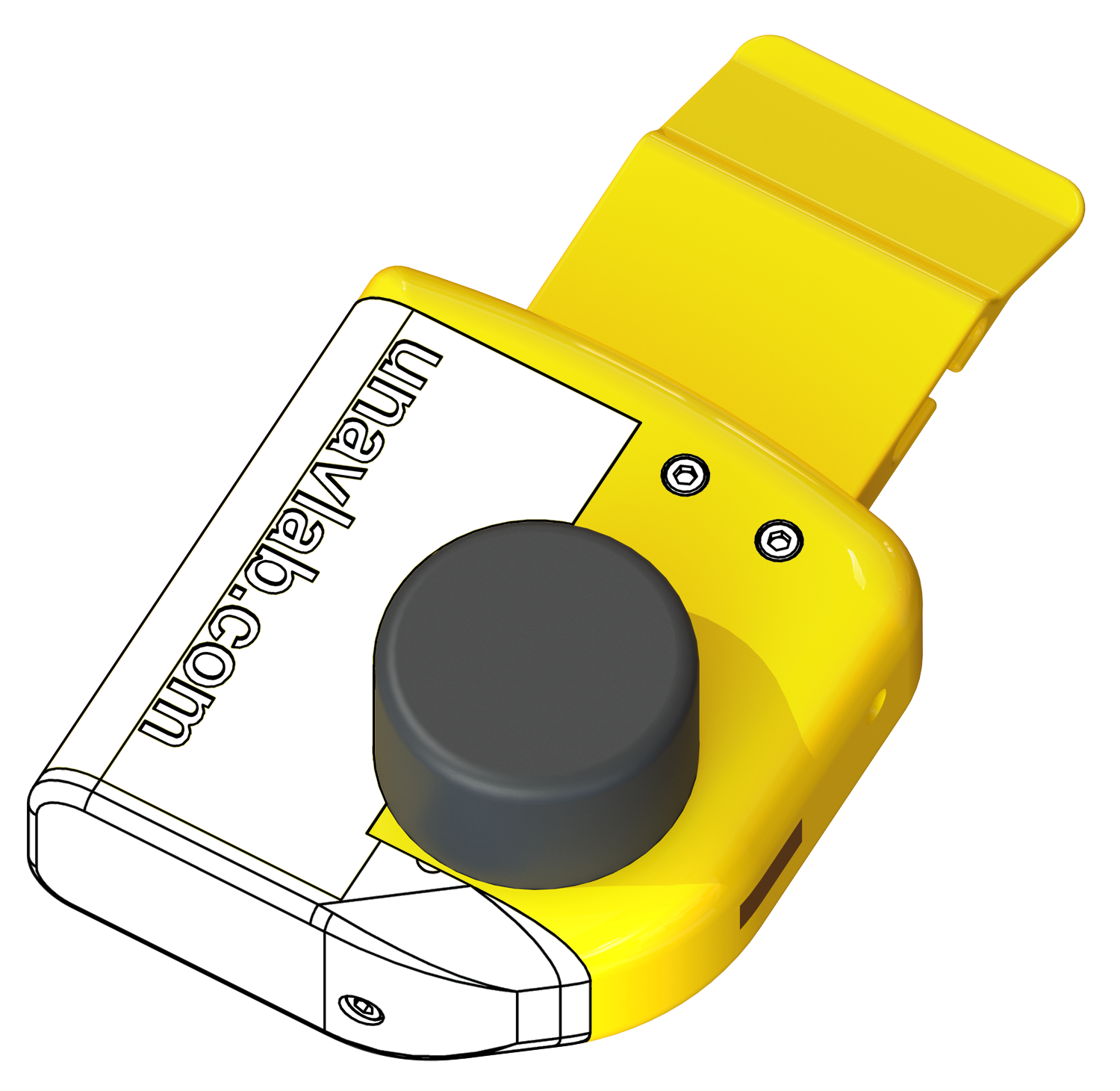
Instead of an epigraph
- You are allowed only 200W of input power. Why is the output 1kW?
- And I have only 200 W of input!
- With 200W of input 1 kW at the output ???
- Well, this is the power amplifier!
- And I have only 200 W of input!
- With 200W of input 1 kW at the output ???
- Well, this is the power amplifier!
Introduction
We have already written about our underwater GPS and UKB system ( one , two , three ). In the comments to the very first article, the user r9laj remarked: "... a logical development of your navigation device would be to add to it a means of communication for divers, such as a walkie-talkie." And in the last article we promised to record the president’s voice, made after 700 meters of cyanobacteria. And since we are not standing still, it is time to tell about the new device for simple divers and fulfill the promise.
How to communicate to the diver?
Let's start with the main question: how does the “diver-diver” and “diver-surface” communicate?
Due to the fact that the radio signals practically do not spread deep into the water, with the exception of ELF and VLF ranges (look here and here ), using a normal radio will not work and only a few ways remain:
- Diving signals -
for free communication on any topic alimited set of gestures for the most common situations. The main disadvantages include the limited set of gestures and some differences in gestures from divers from different countries (for example, think that the partner decided to entertain you by depicting a “Cheburashka”, and he is only trying to say that a hammerhead shark is already trying on your soft spot) . - Buoys on a rope or trigger end for which you can pull. In this case, the set of commands is even more limited, and after the fifth spurt it becomes unclear whether this signal or agony.
- Tablet with a pencil
and post crucians for message delivery. - Telephone communication through cable-hose bundles (KHS), providing the best quality of communication, but available only to industrial divers.
- Underwater loudspeakers. Only one-way communication and no extra devices on the diver, but are easily made from improvised means .
- Systems hydroacoustic communication or "diving telephony" (for brevity, we will say "telephony"). It is about such a system and will be discussed.
Is it worth it?
Giving a convex naval look to the market for equipment for divers, you can find many underwater communications systems, both wired and wireless ( one , two , three, and the list goes on).
The usual equipment is a surface communication station and several diving devices (receivers or transceivers). Due to the limited frequency band and the impossibility of normal separation in frequency, communication is carried out only in half-duplex mode. The number of channels usually does not exceed two or three and their switching is carried out by a tangent located on the mask. By the way, almost every manufacturer makes its own diving mask or fastenings only for certain masks, which somewhat complicates the life of a simple user.
The Japanese from the company CASIO went their own way and in their Logosease refused buttons. To switch channels and switch on the transmission, you need to knock on the device’s body, but what a bad luck, it reacts to a powerful acoustic signal as a tap and starts to go crazy. Of the advantages - compactness, the ability to record negotiations and the use of bone conduction. Among the shortcomings - the high price and low communication range.
A significant disadvantage when using diving telephony is the need to use a full face mask. Without it, speak normally will not work. Here is a funny example. If at the 54th second you did not look at the subtitles and understood the speaker, then you do not need a full face mask.
And is it worth it to do your own if there are many competitors offering a bunch of devices at reasonable prices? Of course worth it!
AMa sound us sweet and pleasant
There are many types of modulation, but in diving telephony they usually use amplitude modulation with a single sideband (SSB), well known to any radio amateur. You can read briefly here .
The standard frequency is 32.768 kHz (upper side). Compatibility, at this frequency, of devices from different manufacturers is considered a good form and vital necessity. We decided not to break this tradition, but we wanted more channels. At the moment we use 8 (even in the diving device) the most common:
Channel 1 = 32.768 kHz (USB - upper side)
Channel 2 = 32.768 kHz (LSB - lower side)
Channel 3 = 31.250 kHz (USB)
Channel 4 = 31.250 kHz (LSB)
Channel 5 = 28.5 kHz (USB)
Channel 6 = 28.5 kHz (LSB)
Channel 7 = 25 kHz (USB)
Channel 8 = 25 kHz (LSB)
There are a few more channels used by the military and are at lower frequencies. For example, NATO uses 8.0875 kHz (USB) [1].
Spoiler
Yes, it is very easy to listen to their talks if it happens to get close to the distance of communication, which for these frequencies does not exceed 10 km.
By the way, James Cameron, while diving into the Challenger Abyss on the Deepsea Challanger, worked with the support vessel in just such a way.
By the way, James Cameron, while diving into the Challenger Abyss on the Deepsea Challanger, worked with the support vessel in just such a way.
What do you like or dismiss too much
We have been postponing the development of our own diving telephony option for a long time, until we were persuaded by divers. And now, a couple of months before IMDS-2017, we started to develop.
To begin with, it was necessary to determine the name of the future product and, by good tradition, it was called RedPhone-OS (surface station) and RedPhone (diving device), as well as with parameters. For a diving device we have:
- The maximum possible time of autonomy, the ability to quickly replace batteries / accumulators between dives and their prevalence.
- The maximum possible range of communication. Since the frequency range and modulation type of frequencies are hard-coded, the range can be increased by increasing the sensitivity of the receiver and / or increasing the transmitter power (usually 0.5-1W).
- Switching on when immersed in water and off only after leaving the water.
- Simple channel switching mechanism without the possibility of switching during the dive.
- The presence of AGC (with a range of about 80 dB) with adjustable times of rise and fall, to prevent clipping of the received signal. When working near a transmitting antenna on a receiving antenna, you can easily get a few volts, and at a distance of 700-800 meters, you have to rely on a few milli-volts or microvolts.
- Compactness and minimalism! No screens with beautiful menus, heaps of buttons and a million extra features.
- Compatibility with existing devices on the market.
- Since we do not plan to make our own masks, it is necessary to provide for a removable mount.
It was decided to postpone the use of bone conduction
As we were given a mask, the manufacturing began with the tangent. It must be airtight, large enough to press with gloves and have a large stroke. The basis of the button is the good old reed switch and the choice is clear. So that the reed switch is not crushed by the pressure of water, it is filled with compound. The microphone is located on the bottom of the tangent.
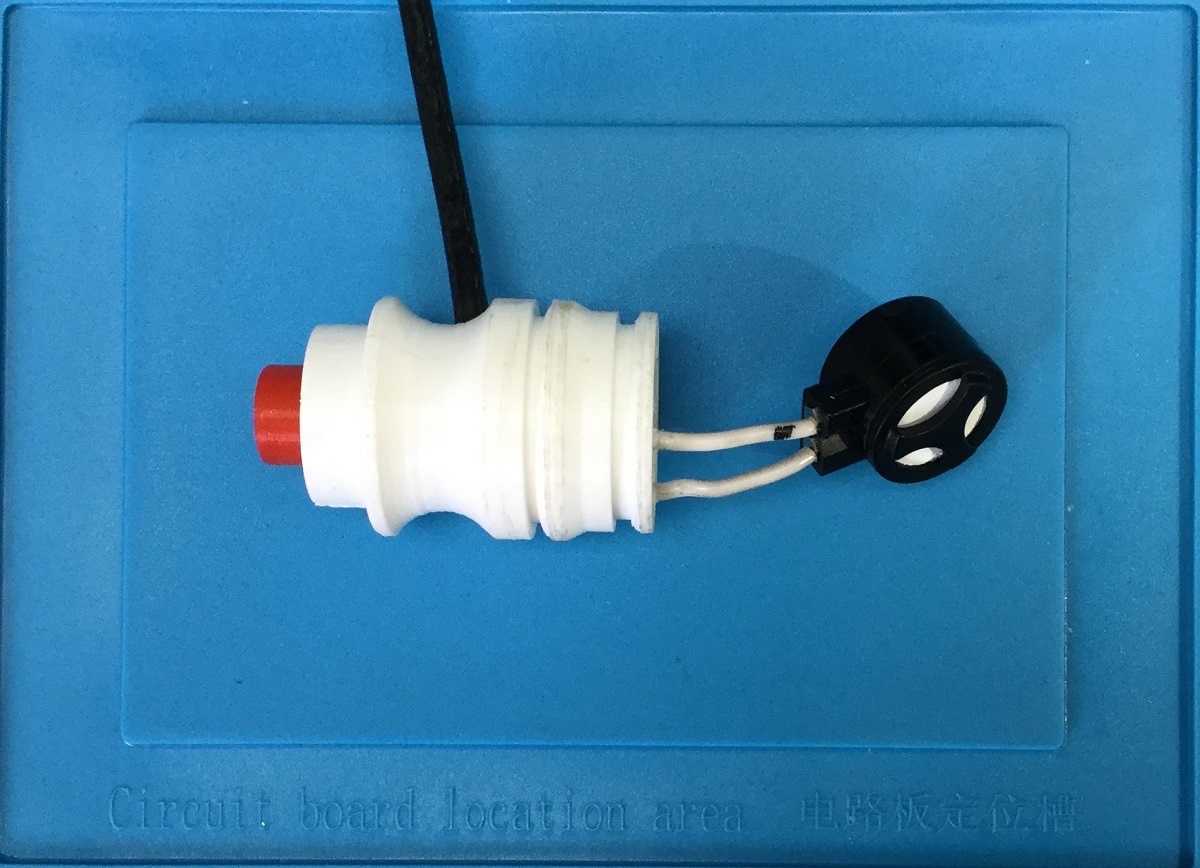
And here is a mask
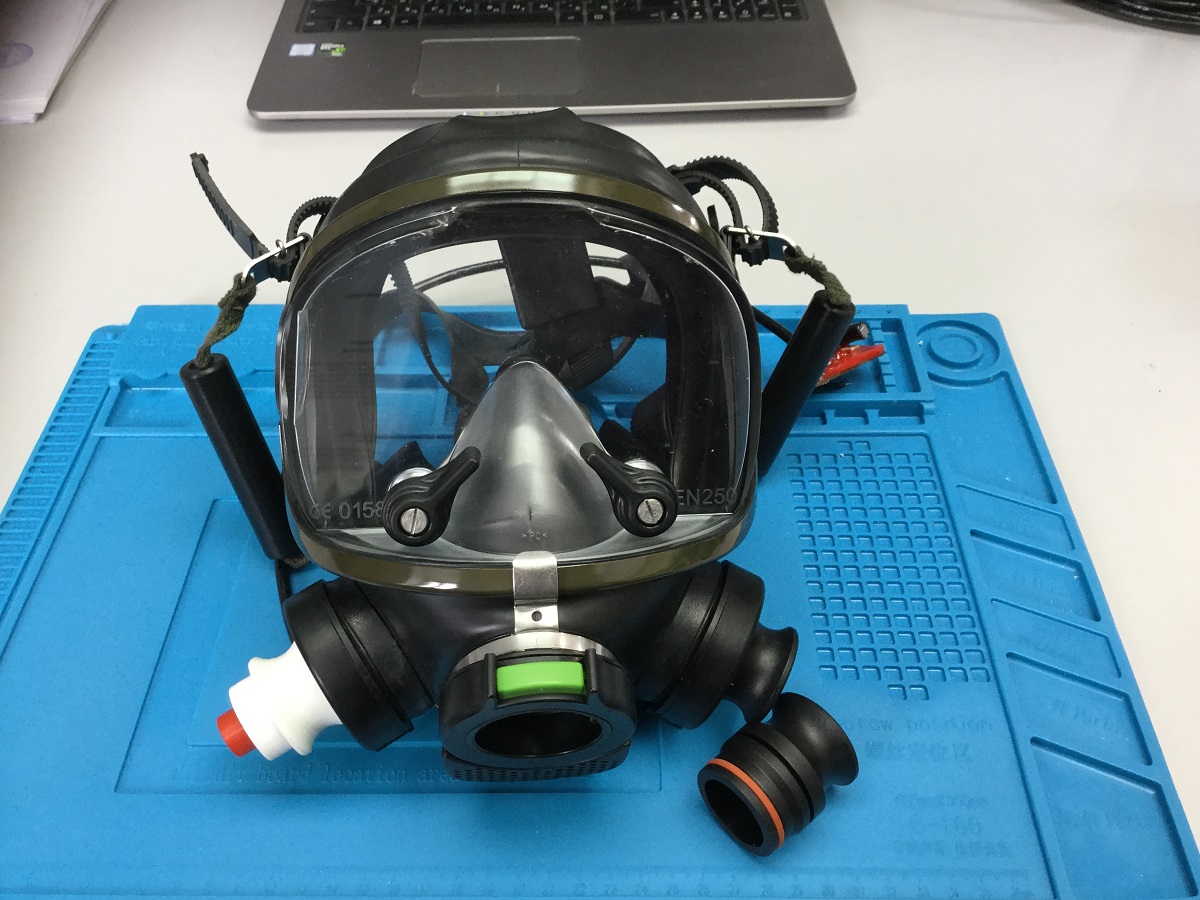
The body of the future device appeared and evolved along with the board, but the final size was set by the batteries.
The first tests of the telephony layout were carried out in a wonderful pool .
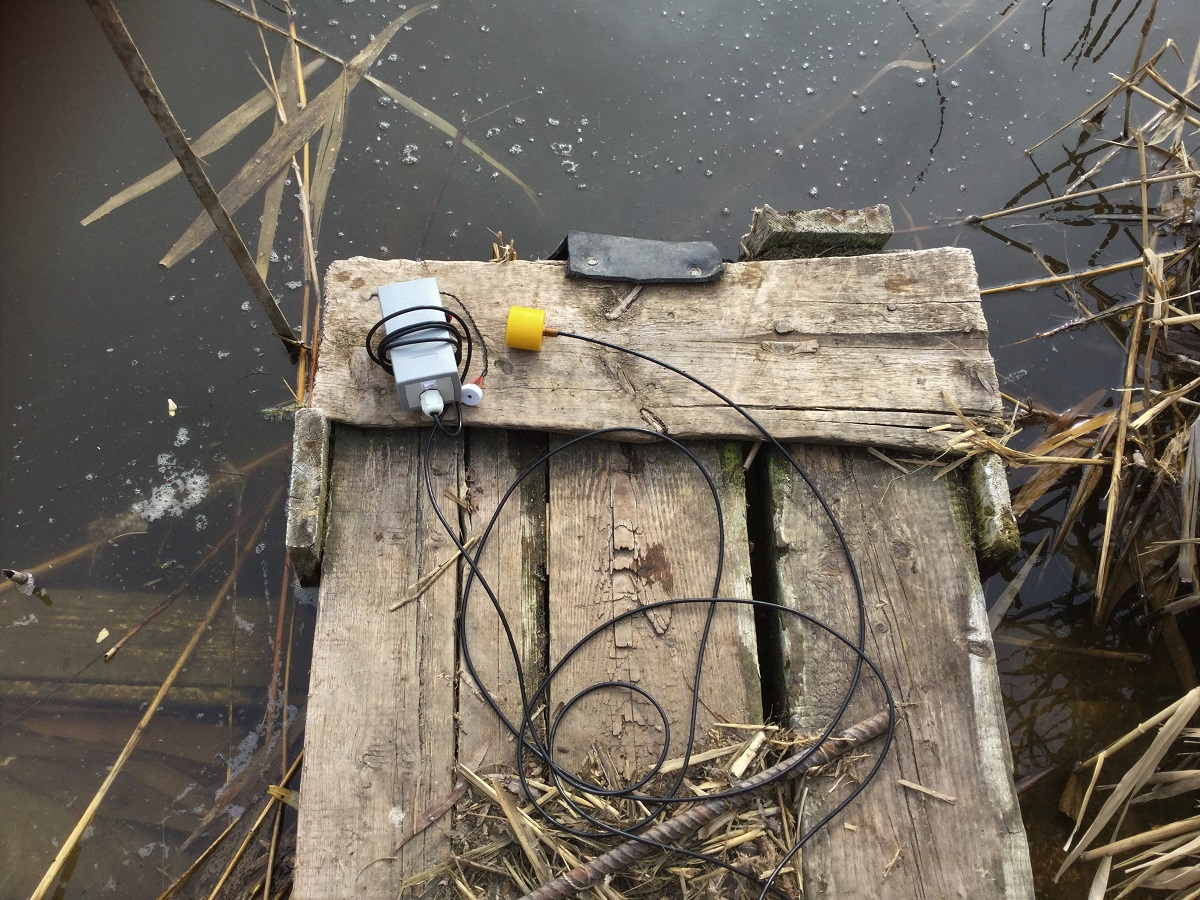
And after the tests, the power in the study mode was set equal to 5W (or 10W, for those who like louder). In this regard, the batteries quickly grew to 2 lithium-ion standard size 18650 and the final version of the case appeared:

On the back of the case is piezo dynamics. Its main advantage is extremely small thickness and complete tightness, and also, as a pleasant bonus, is the use of bone conduction in the case of adhesion to the temple. The mask mount is removable and is mounted on two screws. If necessary, it can be quickly converted to the needs of the client. When two contacts are closed on the front of the case (in our case it is two screws), the device turns on. Inclusion occurs even in distilled water.
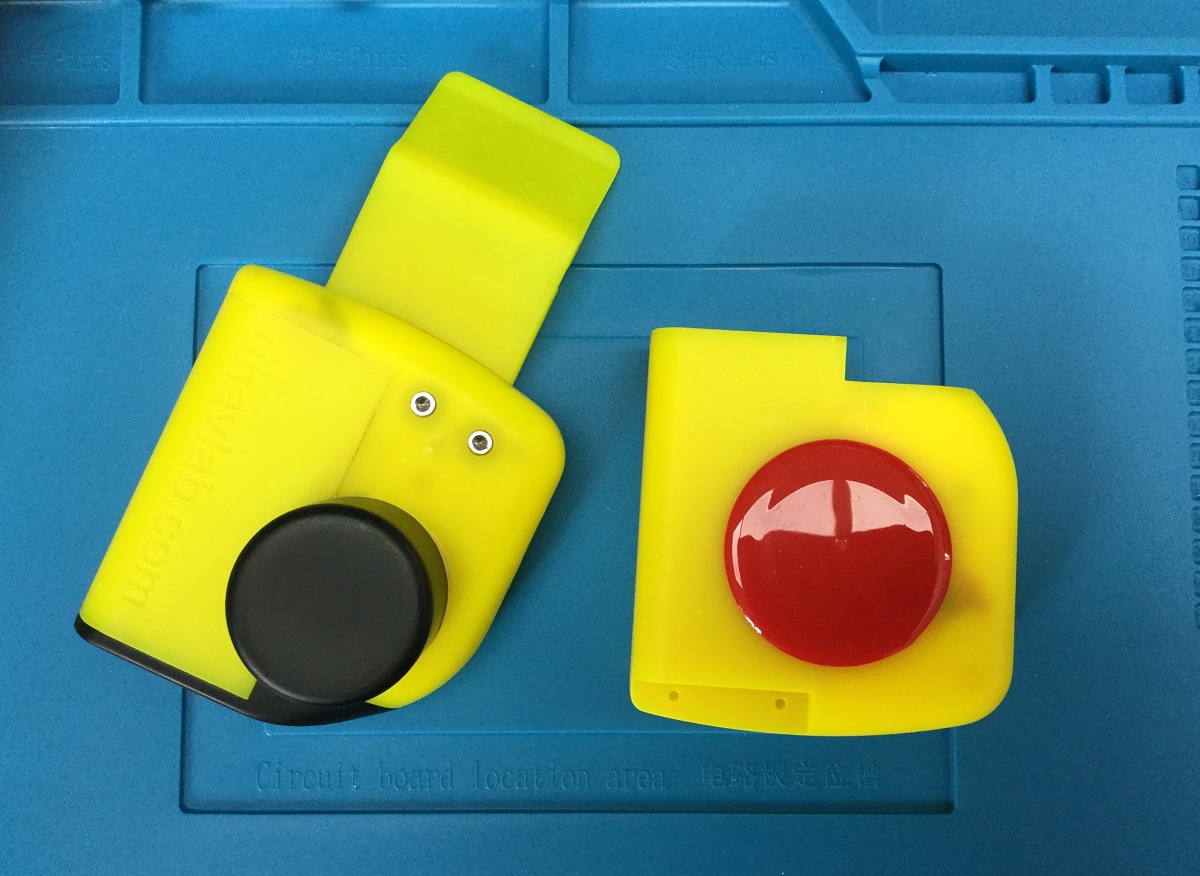
The channel changer is comfortably located in the battery compartment, excluding accidental channel switching, which is especially important when the head is busy with a completely different one.
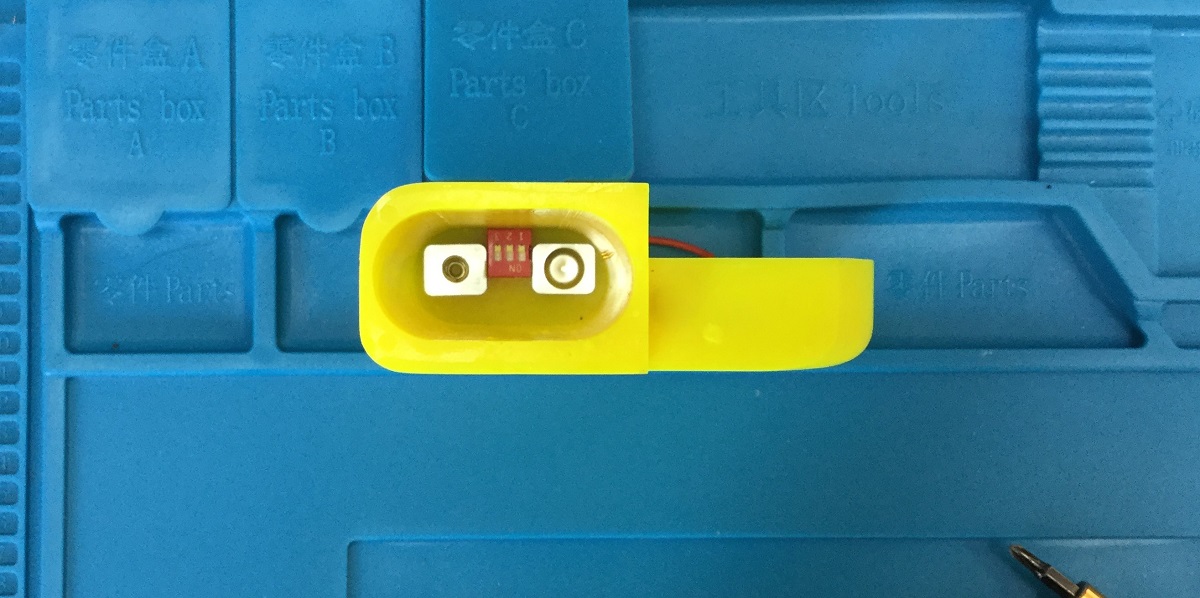
For the top part with the battery, we decided not to waste time on trifles and put 4 lithium-iron-phosphate batteries with a capacity of 7000 mAh.

General testing of the system (without participation of divers) was carried out on the Pichuga River in the Volgograd Region and almost coincided with testing of the Zima UCB system. August in Volgograd - the time is hot and all local water bodies quickly begin to “bloom”. Pichuga is not deprived of this fate and in other years it blooms so that it becomes possible to walk on water without being a saint.

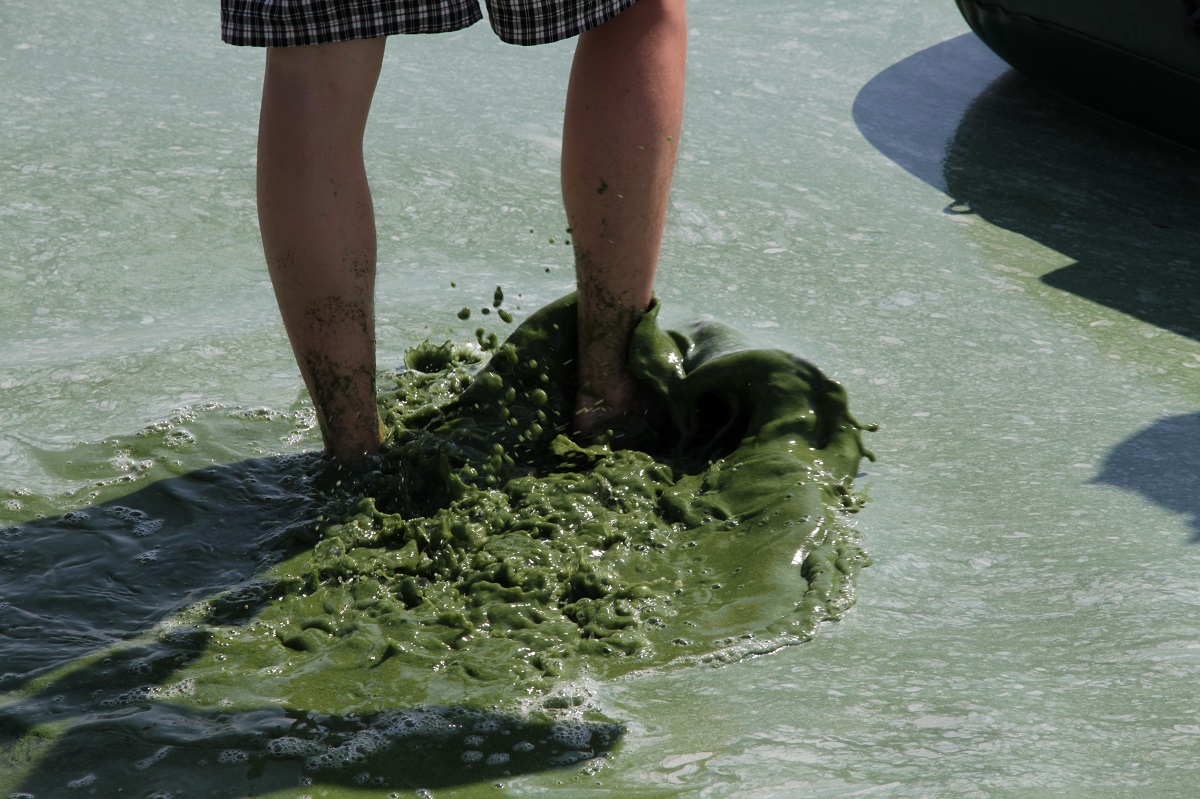
Work in such conditions can not (almost) no sonar communication systems (even ours). Even if the transmitter output power is 100-200-300 ... 1000W, the hordes of silent cyanobacteria and algae will silence any system. The only option is to sail a hundred or so meters from the coast, where the amount of algae is somewhat reduced, but even there they are enough to sound well. Plus, they are distributed by elongated "clouds", which makes hydrological conditions completely unpredictable.
Very effectively, these clouds look on Google maps. Here is a picture of a reservoir near the test site:
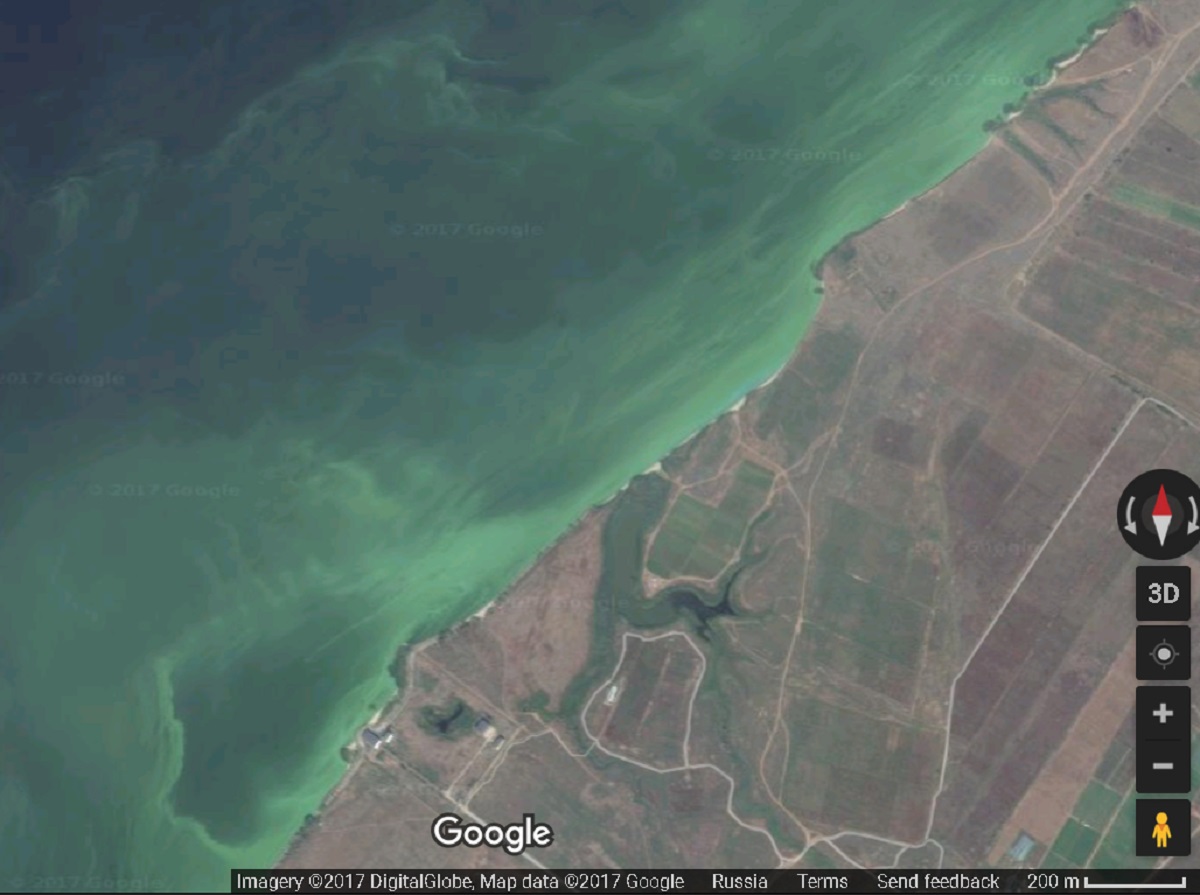
It was in such conditions that we decided to try our RedPhone-OS. The speech of the President at the UN General Assembly was chosen as a reference voice.
This is the temporary implementation of the hour recording: we sailed by boat directly from the transmitter mounted on the raft (at the beginning of the recording the signal was overloaded) to 700 meters (in the middle of the recording a very noticeable drop in amplitude) and around the middle of the recording we turned around and swam in the opposite direction.
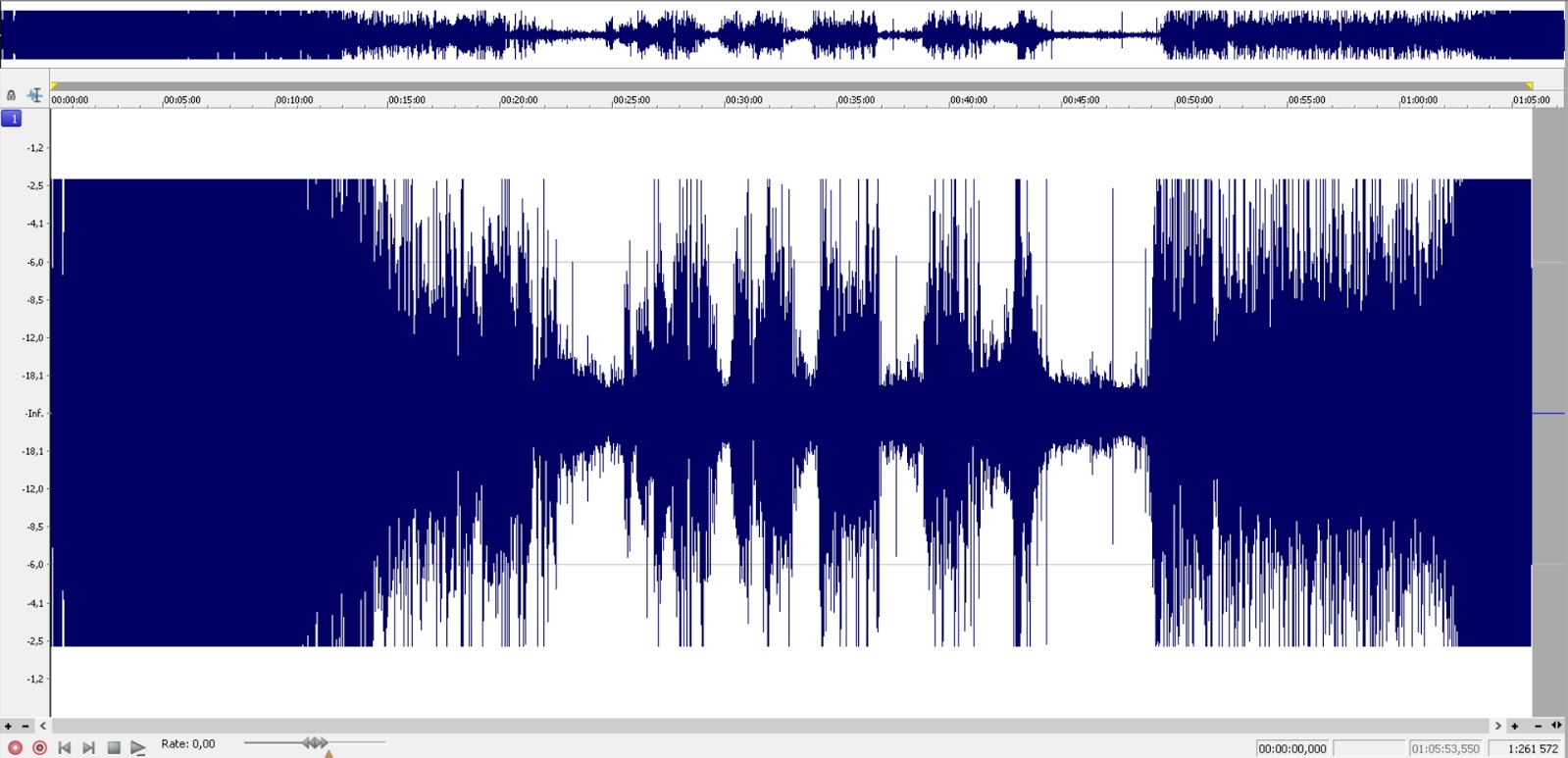
The overall spectrogram shows sequential channel switching:
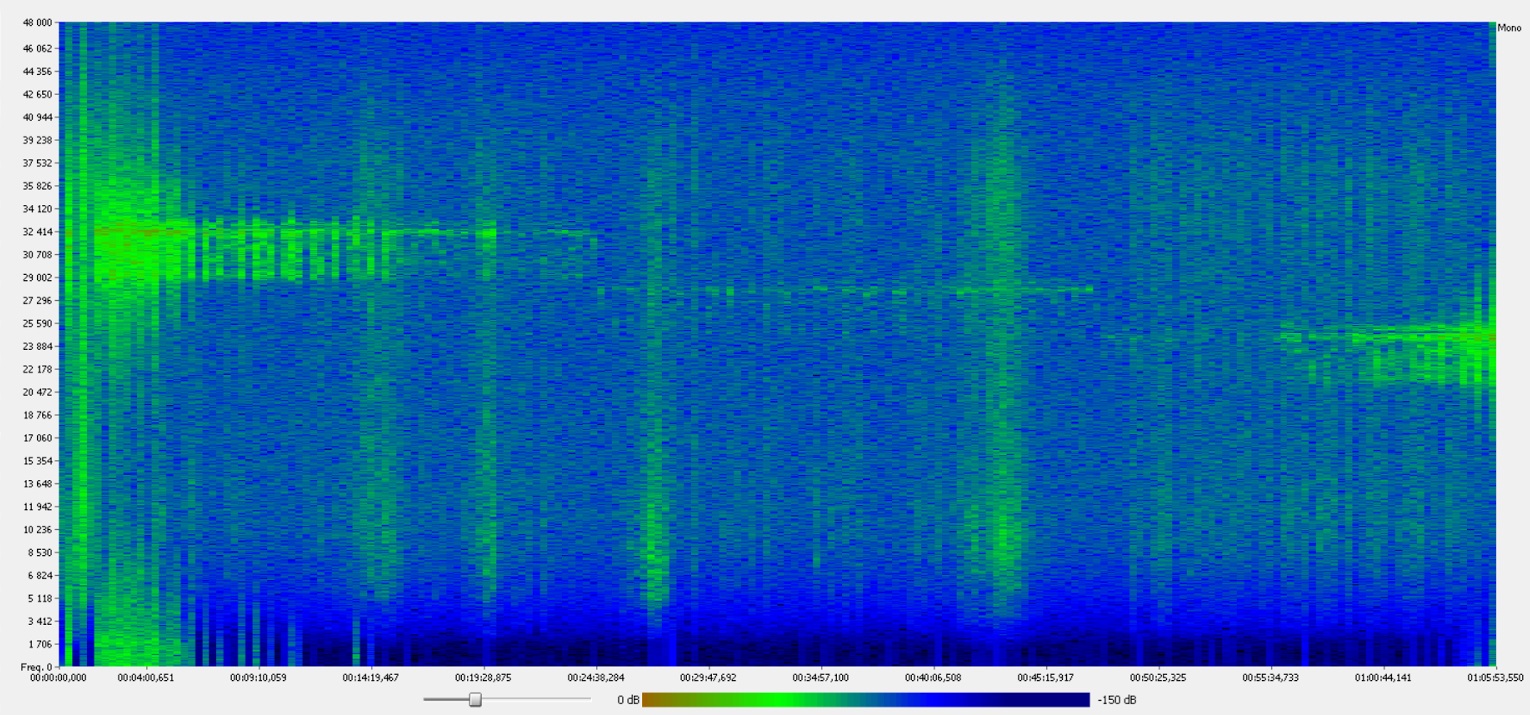
In the comments to our articles, people are often worried about sound pollution, as an example we will give a part of the spectrogram on which the noise of the motor of a boat was recorded, passing at a minimum distance of about 500-600 meters from us:
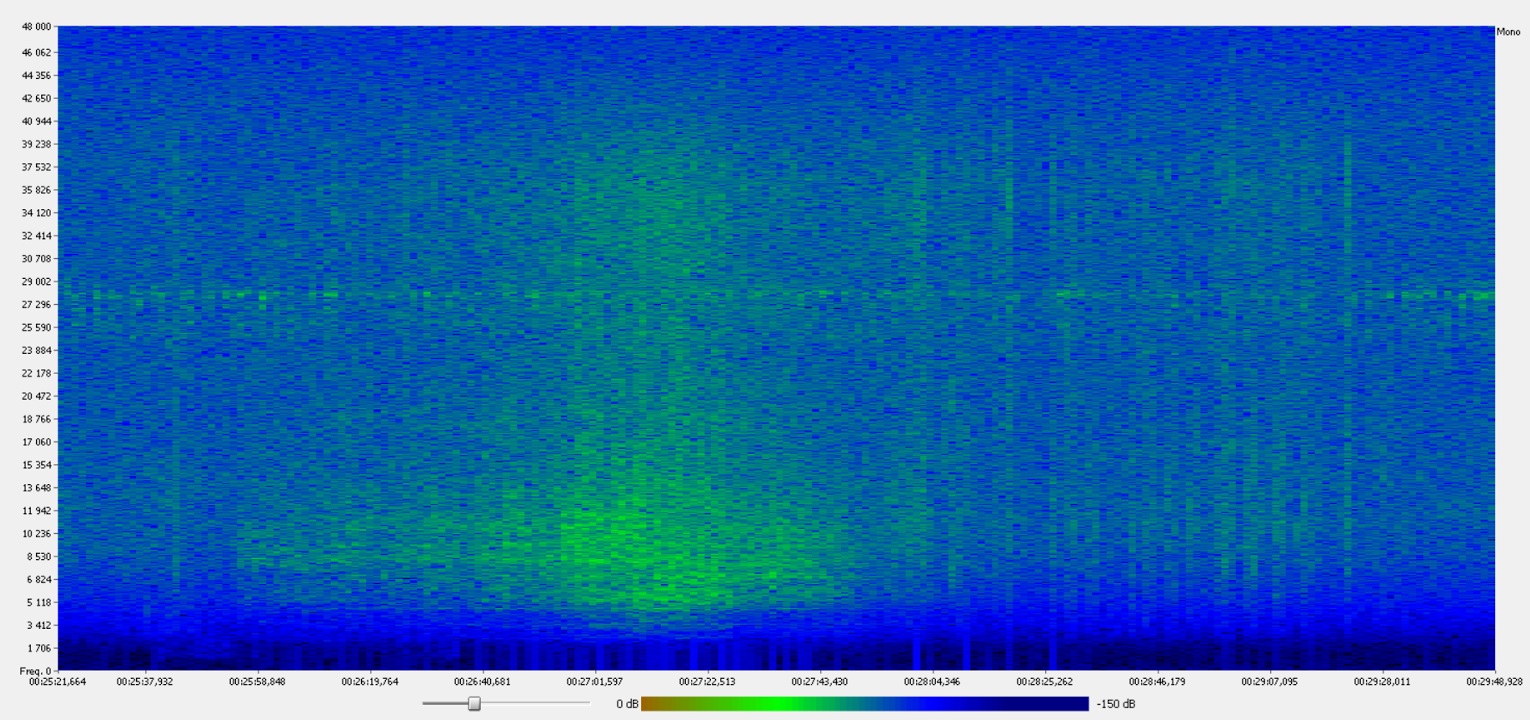
A thin strip in the region of 25 kHz is our phone, and the broadband spot is the noise of a motor boat. There is also worth considering that our recording device contains a band-pass filter of about 5-38 kHz, and much of the noise of the boat just did not get on the record.
For total immersion, we present this piece of the original signal recording with the sound of a motorboat , and the most important result of these tests is a complete demodulated recording of the president’s voice through 700 meters of cyanobacteria (C).
Sudden changes in volume caused by the uneven passage of sound through the layers of algae, as well as the effect of the Doppler effect, are well heard on the recording. And, if you listen very carefully, you can even hear the beats of the oars on the water (although you can only understand this by the rhythm).
And here is the complete set presented at IMDS-2017:
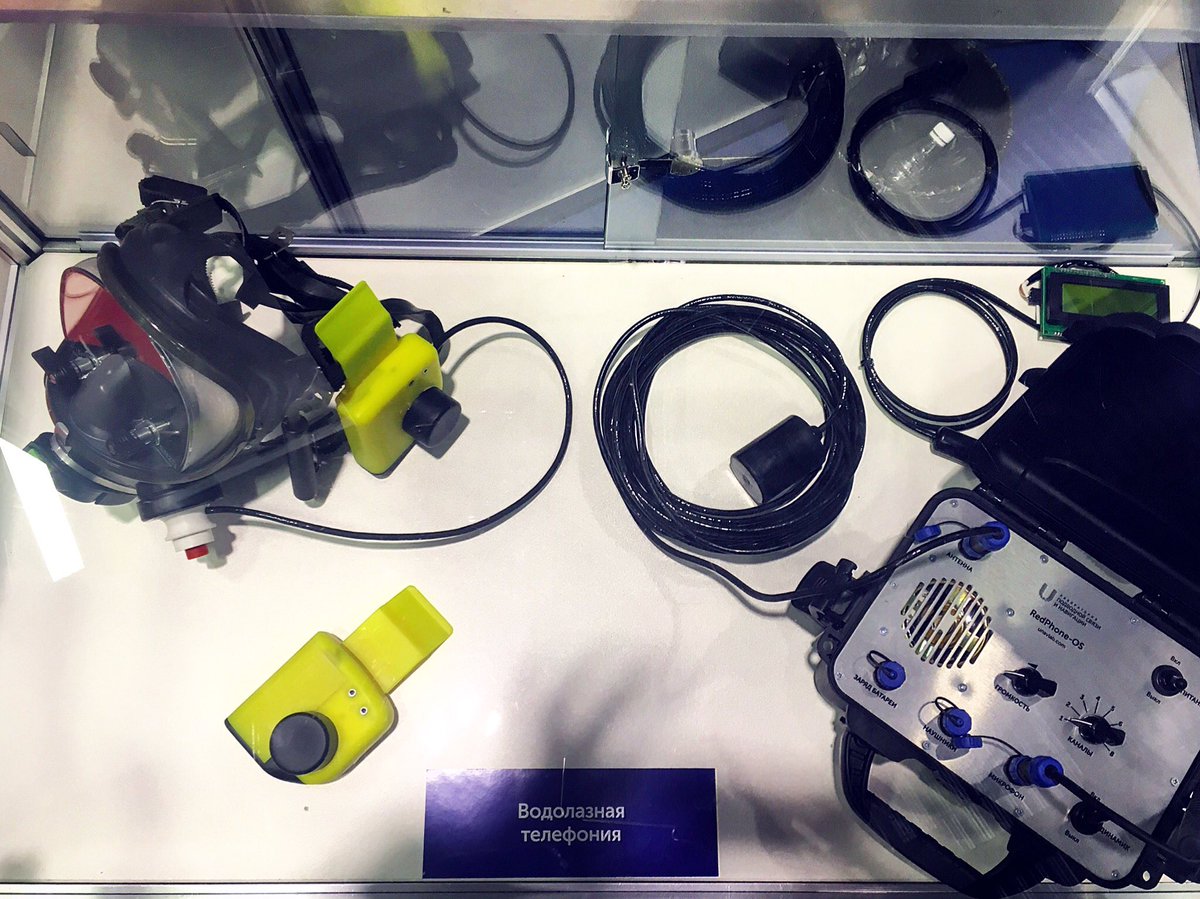
And what about the RedPhone that competitors don't have?
Immediately I will say what it is not. There is no voice menu (and never will be), voice activation, channel switching button and manual volume adjustment.
There is, like everyone else, the measurement of battery charge, call tones, noise reduction.
It would be strange to release the device is not particularly different from those on the market. And RedPhone has some interesting features:
- Integration (at the moment partial) with Zima UCB system. Agree, it is nice not only to talk with a man, but also to know where he is, and in the case of a diver also how deep he is. Sometimes it is vital.
- The ability to address the call (as possible and broadcast call) of a specific diver. No matter how many devices are listening in the same channel, the message will be received only by the required diver, and the rest will not be distracted from work.
- The possibility of remote
undermining ofswitching the RedPhone to the transfer mode or transferring it to emergency beacon mode.
It is worth saying that all these functions are currently being tested and some of them will not be added to serial products, but it is also possible that new ones will appear (already in plans to add preservation of all negotiations and a docking station for RedPhone).
1. Robert Istepanian, Milica Stojanovic. Underwater Acoustic Digital Signal Processing and Communication Systems. ISBN 978-1-4757-3617-5
All Articles